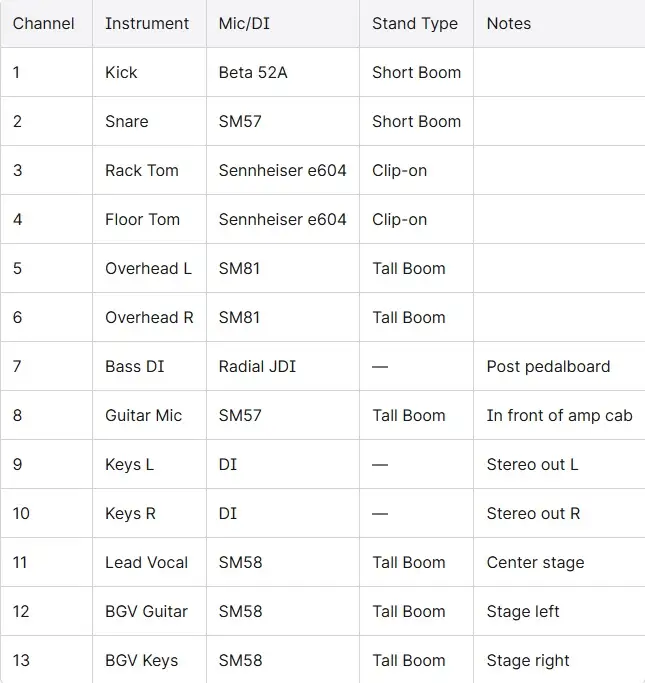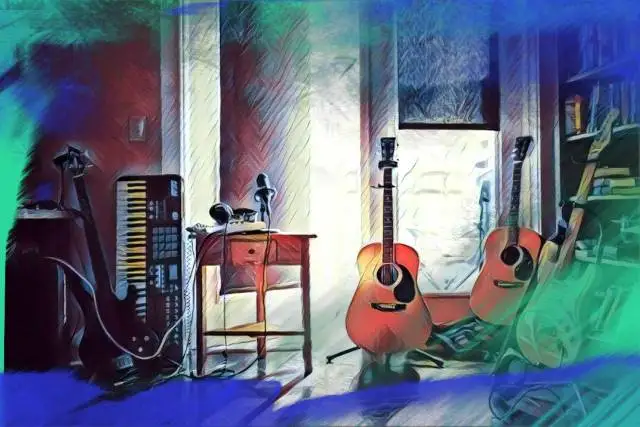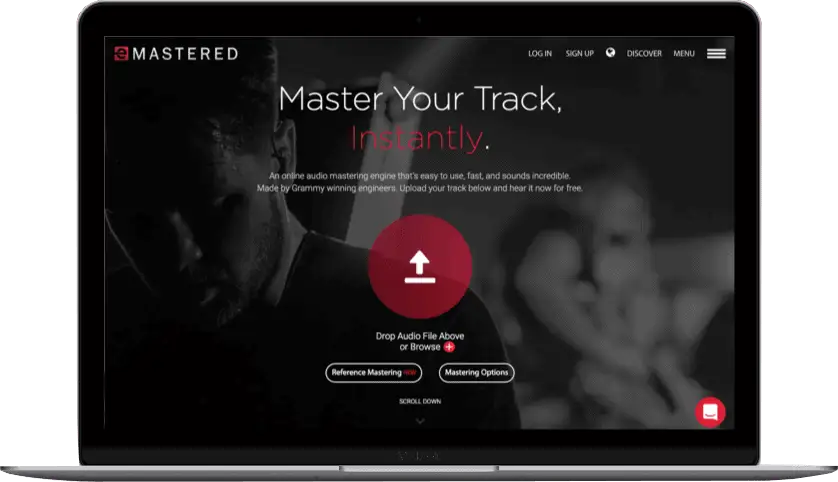If you’re planning to play a live show or host a music event, whether it’s a dingy bar gig or a high-caliber corporate function, there’s one word you’re going to hear sooner or later: backline . And if you don’t know what it means, you can join the club of millions of musicians who have no idea either!
Plenty of new artists head out on tour without a clue of what a backline is. Some fake it. Others stay quiet and hope they pick it up along the way. But here’s the thing: if you don’t get familiar with it, you’re setting yourself up for confusion, delays, and a potentially very silent stage.
So, what is backline in music?
In short, the backline is the gear that’s already provided at the venue or event. It usually includes the basics, such as amps, drums, keyboards, maybe even a bass cab or two, so that artists don’t have to lug half a studio across the country.
However, just as the gear different artists use varies wildly, so do backlines. What’s standard at one venue might be missing entirely at another. One show might offer boutique tube amps and a pristine Ludwig kit, and the next might throw you a dusty crate with a single cymbal stand and an amp that cuts out if you breathe on it.
When putting together your own backline list, make sure to include:
- Amp make and model (guitar/bass)
- Drum sizes, brands, and hardware needs
- Keyboard/synth brand and stand requirements
- DI boxes and power needs
- Mic stands and basic routing (e.g. pedalboards, splitters)
Beyond the gear list, a proper backline sheet should also include tuning preferences, tech requirements, and any quirks your setup has. Basically, it should have anything that could trip up a tired sound tech at 5pm during load-in.
Whether you’re a solo singer-songwriter, part of a 10-piece funk band, or looking to host your own shows, this piece will lay out exactly what you need to know about backlines.
What is the Point of a Backline?
While a backline may just seem like a list of gear, I like to think of it as a communication tool. It’s how you let everyone involved in your show know exactly what you need to perform comfortably and confidently.
Your backline equipment info speaks to:
- Venue managers
- Event organizers
- Promoters
- Sound engineers
- Stage techs
- Backline companies
- Tour managers
- Talent buyer
- And anyone else helping make the show happen
Now, depending on the kind of gig you're playing, your approach to backline will look pretty different.
At a small DIY show or local bar gig, chances are you’ll need to bring everything , including amps, cymbal stands, pedals, keys, cables, you name it. But roll into a larger venue, music festival, or well-organized showcase, and you might find they’ve already got a full setup on deck with some power strips to spare.
For artists travelling long distances (especially flying), this is huge. You can’t exactly check your Marshall half stack at the airport without paying a fortune and crossing your fingers that it arrives in one piece. With a solid backline arrangement, your gear will already be there waiting for you.
Sounds pretty convenient, right?
Of course, the real power of a good backline is that it keeps everything running smoothly. When the promoter knows you need a Fender Twin, or a five-piece kit with boom stands and a keyboard stand, there are no hiccups. No panicked soundcheck. No missing gear. No last-minute scrambles to borrow an amp from the opener. You just show up, plug in, and play.
That’s the point of a backline: making sure nothing gets lost, no matter where or how you're playing.
How to Determine Your Backline Gear
https://www.youtube.com/watch?v=iWpsBKK-t8U
Building your document with all the backline gear starts with one simple step: talk to your band. Every member.
It might sound obvious, but too often one person handles all the logistics without checking in, and that’s how you end up with the wrong amp, a missing keyboard stand, or a drummer stuck with cymbals that are way too dark for your heavy metal set.
So, ask each player what they actually need to perform comfortably.
For example:
- Your drummer might need a 5-piece shell pack, two boom stands, a DW 5000 kick pedal, and their own snare.
- Your guitarist might be fine with a Fender Twin or a Vox AC30, but absolutely does not want to play through a Line 6 combo.
- Your bassist might need a clean 4x10 cab and a DI box.
- Your keyboardist may need an 88-key weighted controller, a stand, a sustain pedal, and stereo DI.
Once you’ve collected everyone’s needs, create a list that includes these key details for each piece of gear:
- Type of gear (e.g., guitar amp, drum kit, keyboard)
- Preferred brand/model (Fender Hot Rod Deluxe, Nord Stage 3, etc.)
- Secondary option (just in case your top choice isn’t available)
- Any specific notes (like “must have footswitch,” or “no reverb needed”)
- Items they’ll bring themselves
- Items they don’t want provided
That last part (the “do not provide” list) is surprisingly important. If your guitarist hates digital modelling amps, or your drummer refuses to play on a shallow snare, put it in writing. This helps avoid misunderstandings and keeps everyone happy on stage.
Also, having a backup option for each key item is a smart move.
Gear availability varies between venues and rental houses, especially on the road. If your first choice isn’t around, a solid second pick can keep the show going with minimal compromise.
In short: communicate, get specific, and write it all down. That’s how you build a backline that works for your band, not just “a band.”
Putting Your Backline on the Rider
Once you’ve figured out your backline gear, the next step is getting it into writing. Specifically, into your contract rider .
If you’ve never dealt with one before, a rider is basically a document that gets attached to your booking contract. It outlines everything the venue, promoter, or talent buyer needs to provide in order for your show to run smoothly.
That includes hospitality needs (like water, towels, or snacks), tech specs (like power requirements), and, of course, your backline .
Your backline rider is technically part of your technical rider , which is the section of the contract that focuses on stage setup, sound, lighting, and gear. While hospitality riders might ask for things like a bottle of tequila and a veggie tray, your backline rider should zero in on what gear needs to be there and how it should be set up.
And don’t forget that your backline rider should always include a stage plot . That’s a visual layout that shows where everyone and everything go on stage. We’ll walk you through how to make one in a bit.
Pro tip: Always include the date of the last update at the top of your backline rider. It might sound small, but venues and production managers often work with outdated documents floating around from previous tours. A clearly marked “Last updated: [DATE]” helps avoid any confusion and shows that you’re organized and professional.
Backline Rider Example
Artist Name: The eMastered House Band
Tour: "AI Mastering Tour 2025"
Last Updated: May 8, 2025
Drums – Provided by Venue
Preferred Kit: DW, Yamaha, or Ludwig (no PDP, CB700, or First Act kits please)
- 1 x 22" Kick Drum
- 1 x 14" Snare Drum (preferably steel or maple shell)
- 1 x 12" Rack Tom
- 1 x 16" Floor Tom
- 1 x Hi-Hat Stand
- 1 x Snare Stand
- 2 x Boom Cymbal Stands
- 1 x Drum Throne
- Kick pedal not needed (drummer brings their own)
Cymbals: Not required – drummer provides
Bass – Provided by Venue
- 1 x Ampeg SVT-CL or SVT-3 Pro Head
- 1 x Ampeg 8x10 or 4x10 Cabinet
- DI required – clean and isolated (preferred: Radial JDI)
Guitar (Lead) – Provided by Venue
- 1 x Fender Twin Reverb OR Vox AC30
- 1 x Straight guitar stand
- Power strip with minimum 3 plugs nearby for pedalboard
Do Not Provide: Marshall stacks or Line 6 Spider amps
Keys – Provided by Venue
- 1 x Nord Stage 3 (preferred) or Yamaha CP88
- 1 x X-stand with stabilizer
- 1 x Sustain pedal
- 1 x Stereo DI or 2 x mono DI boxes
- 1 x Power strip
Vocals – Provided by Venue
- 3 x Shure SM58 wired microphones
- 3 x Tall boom stands
- 3 x 20’ XLR cables
Monitoring
- 3 x Wedges (1 per musician)
- In-ears NOT required
- Reverb in vocal monitors preferred but not necessary
Example: Equipment Rider
Artist Name: The eMastered House Band
Venue Contact: please email _______ for updated files
Last Updated: May 8, 2025
TECHNICAL REQUIREMENTS (SUMMARY)
Power:
- Minimum 4 x 15A outlets across the backline area
- Isolated ground if possible for guitar rig
- Clean power preferred, surge-protected
BACKLINE REQUIREMENTS
Please see the accompanying “Backline Specs Sheet” for detailed preferences. Highlights include:
- Drum kit with throne, stands, and toms (no cymbals required)
- Ampeg bass rig (head + cab)
- Fender or Vox guitar combo amp
- Stage piano w/ DI and power
- 3 vocal mics + stands + XLRs
Backline Specs Example

Going Further with a Stage Plot
If your backline is your blueprint, your stage plot is the floor plan.
A stage plot is a visual diagram that shows the venue crew exactly where every piece of gear and every band member needs to be placed on stage. The clearer your layout, the smoother everything will run.
A simple stage plot might just show:
- Drummer in the back center
- One guitarist stage left
- One vocalist up front center
- Bassist stage right
A more complex stage plot could include multiple vocalists, stereo keyboard setups, risers, in-ear monitor stations, playback rigs, percussionists, and even lighting cues. The more moving parts your band has, the more important it is to make sure your plot covers every inch of stage real estate.
What Should It Show?
First, make sure it's drawn from the audience’s perspective , meaning stage left is on the left side of the page , stage right is on the right, and the drums typically sit toward the back. Label all musicians, gear, vocal mics, DI boxes, monitors, risers (if used), and power drop locations.
If someone needs to move during the set, like a vocalist who hops between a keyboard rig and center stage, note that too.
How to Make a Stage Plot
You can absolutely draw your stage plot by hand (just keep it clean), but if you want to go digital, try a free tool like StagePlot Designer . They make it easy to drag-and-drop icons for musical instruments, amps, and vocal mics.
Just make sure that whatever you use, everything should be labeled and oriented correctly. Don’t forget to include your band name, contact info , and date updated at the top of the plot, too.
Where to Get Backline Equipment
Alright, so you've figured out your gear and locked down your stage plot. Now, where do you actually get this stuff?
In most major cities, you're in luck. There are usually dedicated backline companies with warehouses full of everything from vintage amps and boutique drum kits to digital pianos and DJ rigs. These backline companies are used to working with touring artists, so they know the drill. Just send them your backline specs, rider, and stage plot, and they’ll handle getting all the equipment.
If you're playing a smaller market and need specific gear, things might get trickier. There may not be a local company nearby, which means your gear might need to be delivered from a neighboring city, sometimes at an extra cost. This is where having a secondary gear option on your rider can be a lifesaver.
Sometimes, the venue already has house backline, especially if it's a music venue, festival, or college. This can be great, but always confirm what they have in advance. “Backline included” could mean a beautiful Ludwig kit and Ampeg stack… or it could mean a 15-year-old combo amp with a bad hum. Don’t assume. Ask for a gear list.
If you’ve got any special gear needs, such as a Vox Continental organ or harp, that might not be commonly available, you'll need to plan ahead. Either arrange to bring it yourself, or talk with your backline provider about special sourcing. Some vendors can track down obscure gear from certain backline companies, but they’ll need time.
Should I Pay for the Backline?
Ah, the money question. The answer? It depends.
Whether or not you’re footing the bill for all the backline gear usually comes down to what’s in your contract. In many cases, especially for smaller shows or independent gigs, backline is considered an artist expense, meaning you’ll need to either bring your own gear or pay to rent it locally.
That said, festivals, international gigs, or bigger promoter-run shows will often include backline as part of the deal, either because it's logistically easier for everyone or just part of the event’s production package.
In these cases, you’ll usually get to submit your rider, and the promoter will coordinate the rentals.
If you’re signed to a label or working with a tour manager or booking agent, it’s worth checking if backline rentals are reimbursable. Some labels will cover those costs (especially on a tour budget).
The End of the Line
Okay, so building a backline isn’t exactly the sexy part of the music industry. No one’s writing love songs about power conditioners or cymbal stands. But whether you're an artist, a venue owner, or someone running a tour, having a solid backline setup is non-negotiable.
Whether you're running or playing small DIY shows or massive festival stages, you’ll run into backline requests constantly. The good news is that once you build a thorough, flexible setup, with your rider, specs, and stage plot in order, you can reuse and tweak it for years to come.
So take the time to do it right. Be clear, be organized, and always have a Plan B.
Because when your gear is where it’s supposed to be, you can stop stressing and just play the show.





